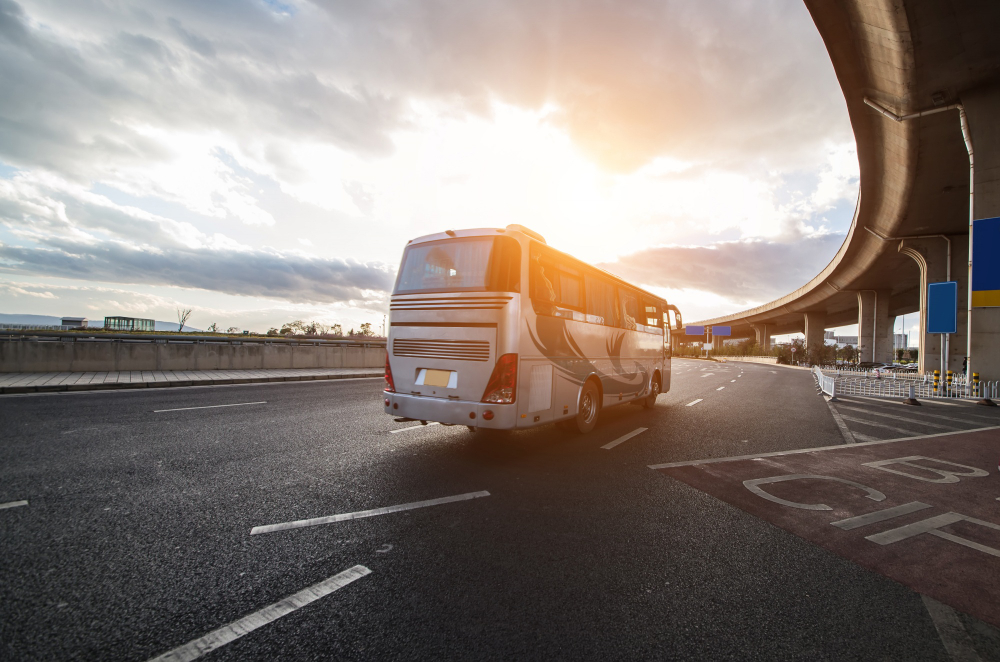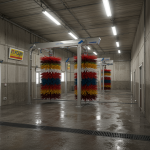Fleet maintenance professionals and truck wash owners know it well—keeping buses clean isn’t just about aesthetics; it’s about extending vehicle life, preserving performance, and making a strong impression. A clean bus reflects a company’s commitment to professionalism, while also offering practical benefits like preventing dirt and grime from damaging vehicle surfaces. But when it comes to choosing the most efficient bus washing method, which wins the race—touchless or brush bus washing?
This blog dives into the science, efficiency, cost implications, and real-world experiences behind both touchless and brush bus washes, equipping you with the insights needed to make the right choice for your fleet.
The Science Behind Clean: Touchless vs. Brush Bus Wash
Understanding How Dirt Sticks to Buses
Buses accumulate layers of grime, including road dust, oil residues, and environmental pollutants, which settle into tiny crevices and surfaces. Proper cleaning requires more than rinsing—it demands mechanisms that dislodge stubborn debris effectively.
- Utilizes high-pressure jets and cleaning agents to remove dirt without physical contact.
- Advanced chemicals break down oil, grease, and grime for a thorough clean.
- Ideal for preventing scratches or abrasions on the vehicle’s surface.
- Uses rotary brushes made from soft or synthetic materials to scrub the bus surface.
- Combines mechanical scrubbing action with cleaning solutions for enhanced dirt removal.
- Particularly effective for heavy grime that requires physical agitation.
Comparing Cleaning Effectiveness
- Touchless Wash is superior at managing hard-to-reach areas and delicate surfaces. However, it may struggle with deeply embedded grime without precise calibration of the pressure and cleaning agents.
- Brush Wash excels in removing heavy dirt layers but has a higher risk of causing microscopic scratches on paint or sensitive decals.
Environmental and Water Use Impact
Touchless washing methods often consume more water to compensate for the lack of physical agitation. Meanwhile, brush systems typically recycle water, reducing wastage but requiring additional maintenance to ensure that debris doesn’t damage equipment or buses.
Operational Efficiency: Which Saves Time and Resources?
Setup and Operation
- Touchless Wash:
- Faster to set up and operate due to its automated nature.
- Requires less manual intervention, making it ideal for high-throughput operations.
- Brush Wash:
- Slower initial setup and calibration for optimal cleaning performance.
- Requires periodic adjustments to ensure brushes remain functional without damaging surfaces.
- Touchless Wash reduces the likelihood of scratches and wear, maintaining a polished finish on buses over time. It’s particularly advantageous for luxurious or specialty fleets where appearance is critical.
- Brush Wash may cause wear on vehicle exteriors over extended use due to consistent physical abrasion. Despite this, upgrades in brush technology are minimizing these risks.
- Touchless systems often require much more water, but advanced setups include water reclamation units to minimize waste.
- Brush systems are already optimized for water recycling and often use fewer aggressive chemicals, reducing the environmental footprint.
- Touchless systems typically require a higher initial investment for advanced pressure stream configurations and chemical systems.
- Brush systems may involve moderate setup costs but require frequent replacements of bristles and maintenance cycles.
- If speed and minimal wear are critical, touchless systems are ideal.
- For rigorous cleaning and durability, especially with hard grime, brush systems take the lead.




